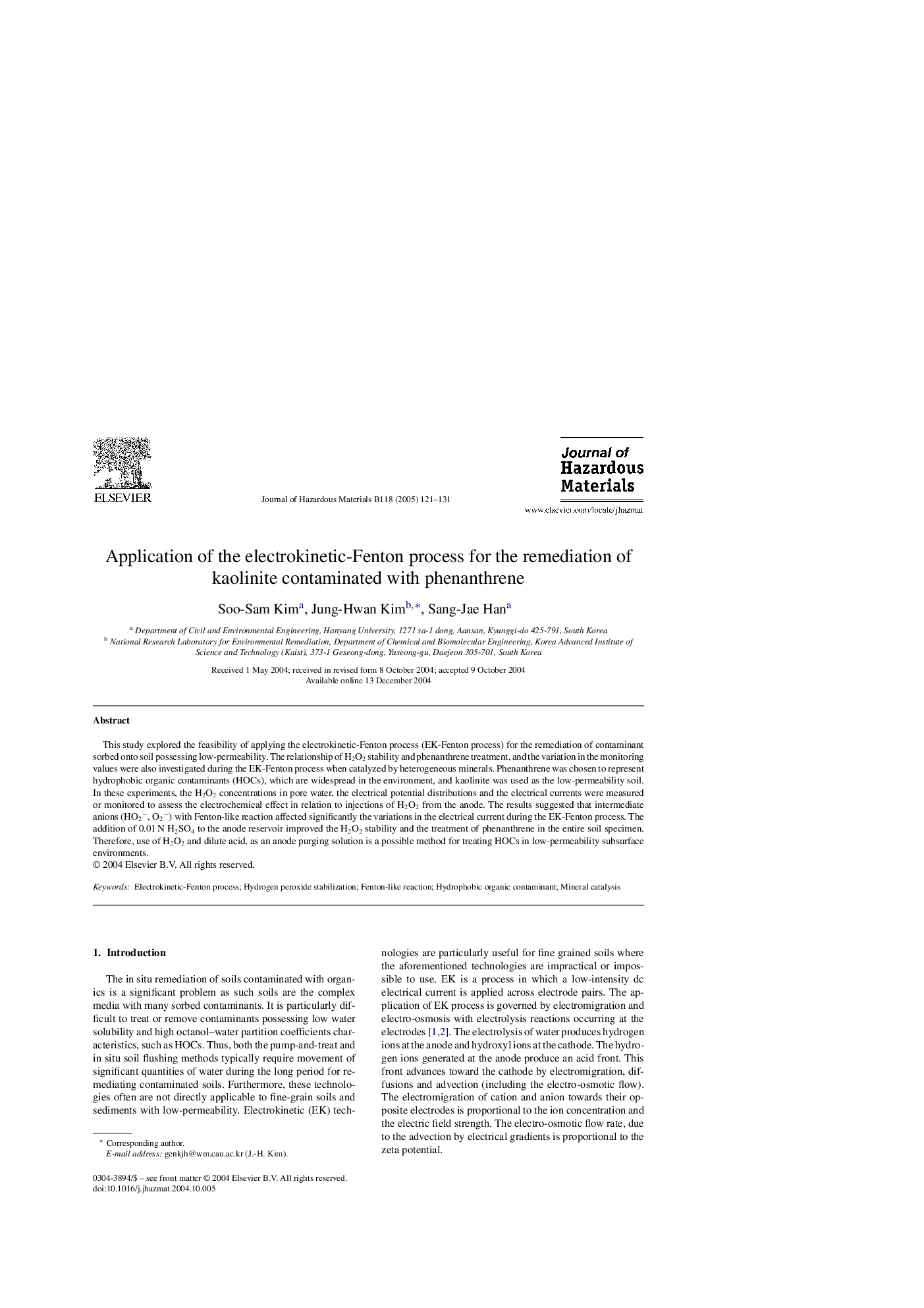| Article ID | Journal | Published Year | Pages | File Type |
|---|---|---|---|---|
| 9674391 | Journal of Hazardous Materials | 2005 | 11 Pages |
Abstract
This study explored the feasibility of applying the electrokinetic-Fenton process (EK-Fenton process) for the remediation of contaminant sorbed onto soil possessing low-permeability. The relationship of H2O2 stability and phenanthrene treatment, and the variation in the monitoring values were also investigated during the EK-Fenton process when catalyzed by heterogeneous minerals. Phenanthrene was chosen to represent hydrophobic organic contaminants (HOCs), which are widespread in the environment, and kaolinite was used as the low-permeability soil. In these experiments, the H2O2 concentrations in pore water, the electrical potential distributions and the electrical currents were measured or monitored to assess the electrochemical effect in relation to injections of H2O2 from the anode. The results suggested that intermediate anions (HO2â, O2â) with Fenton-like reaction affected significantly the variations in the electrical current during the EK-Fenton process. The addition of 0.01Â N H2SO4 to the anode reservoir improved the H2O2 stability and the treatment of phenanthrene in the entire soil specimen. Therefore, use of H2O2 and dilute acid, as an anode purging solution is a possible method for treating HOCs in low-permeability subsurface environments.
Related Topics
Physical Sciences and Engineering
Chemical Engineering
Chemical Health and Safety
Authors
Soo-Sam Kim, Jung-Hwan Kim, Sang-Jae Han,
